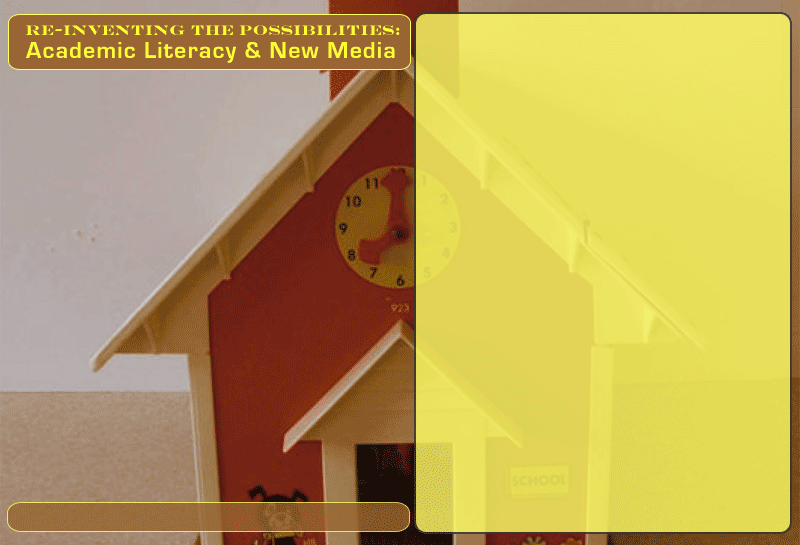
We hope that this discussion will help readers consider the need for rethinking the topoi and commonplaces we use when teaching composition through critical engagement with digital new media. Students can already see the benefits of such a change in academic literacy versus new media literacies. Michael, for instance, wrote in the artist's statement that accompanied his final project:
I feel I am now corrupted. For years, I have marveled at the boundless opportunity for creation in pen and paper (or, more recently, word processor). The written page always seemed so full of promise. Alas, it now feels so limiting. It's almost like lost innocence. Ignorance was bliss, in this case, and I vaguely miss my naiveté.
... Though I occasionally miss my former infatuation with the printed page, I appreciate my new knowledge regarding new media.
This new version of the university—or at least new general-education writing courses within the university—should value different models of learning and nontraditional academic literacies like Michael's, Kiertsen's, and Curtis's texts show most readily. The focus of communication would have to shift away from writing to include new media designing as a critical literacy composition practice, complete with new (media) commonplaces. The process of composing texts in a world full of new media technologies requires us to reconfigure teaching and learning in remarkably innovative and, perhaps, ungrammatical ways. As Michael says near the end of his artist's statement: 'I could easily have gotten carried away, constructing a 20-minute project that would have taken me over 100 hours to create.' How often do we hear that about students' writing? And how often do students willingly spend 100 hours on a school project?
When the dust has settled, students will need critical media literacy skills. As we've argued throughout: Literacy isn't just writing. It isn't just grammar. It is, rather, understanding how to communicate in a complicated, media-rich environment. It's life.
Go back to the last node.